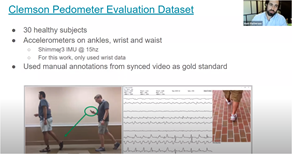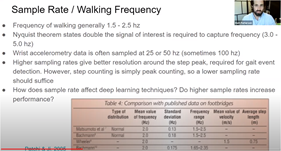Blog 15 – New step counter algorithm - Generating step count out of everyday data
Leading on from the release of Verisense’s validation paper according to DiMe’s V3 framework, we dive into the detail of a new step counting algorithm created by Shimmer’s Data scientist, Dr. Matt Patterson, using the GGIR processing package.
Walking his audience through the different sampling rates and industry best practice, Matt has used Verisense’s wrist-based sensor (tri-accelerometer) to add step counts to enhance the end user metrics for the system. Additionally, Matt has used GGIR to process the raw data and has converted this into sleep/activity and step count data.
Utilizing data from the Clemson pedometer evaluation data, an open-source gold standard dataset, this gives rise to the advantage of having a regular, semi-regular and unstructured walking conditions to draw from. Also, a smaller data set on 24Hr wear was used where the validation metric - total step count was created.
When implementing the algorithm, all the all the peaks were quantified. And for all those peaks, the algorithm calculated the features, such as periodicity and similarity and continuity and used thresholds on those values to determine if a step exists.
Dive into the metrics of this valuable research here.
Outcomes:
Some of the areas that may benefit from this and further research are looking at a deep learning approach to detect steps, the Impact of sampling rates and the potential collaboration, using external packages in GGIR.


